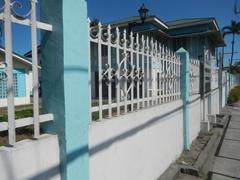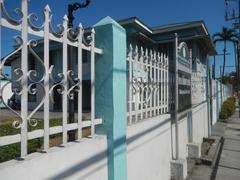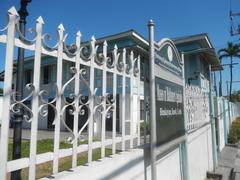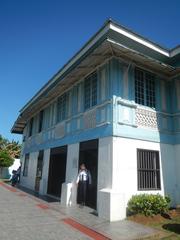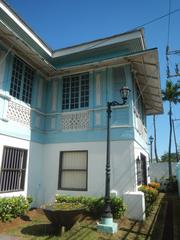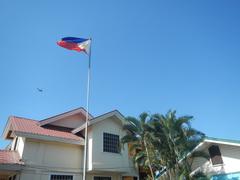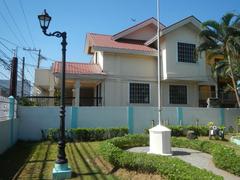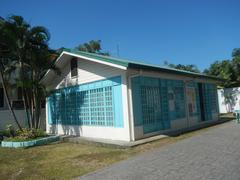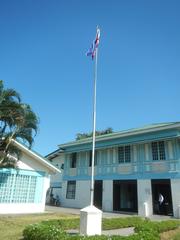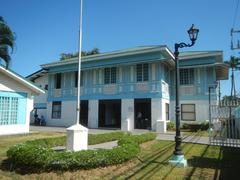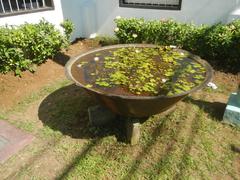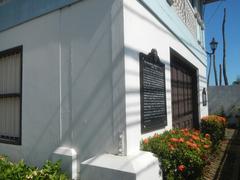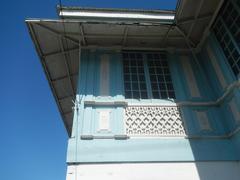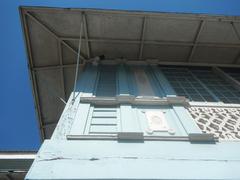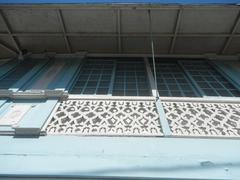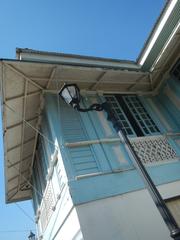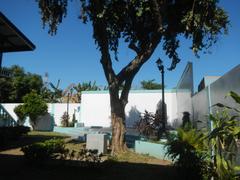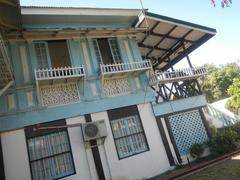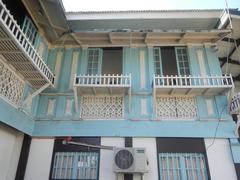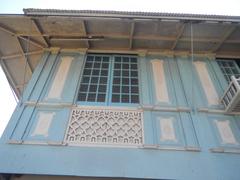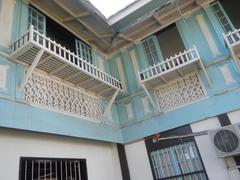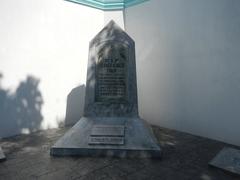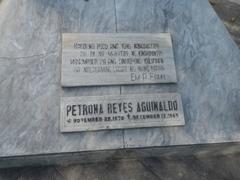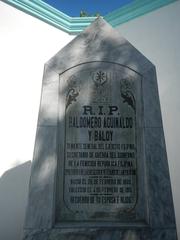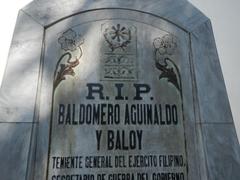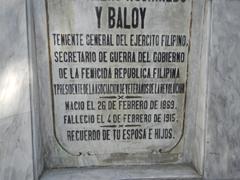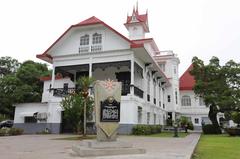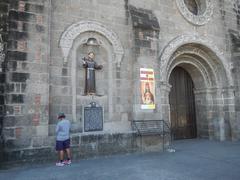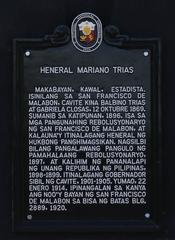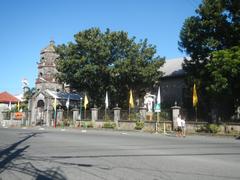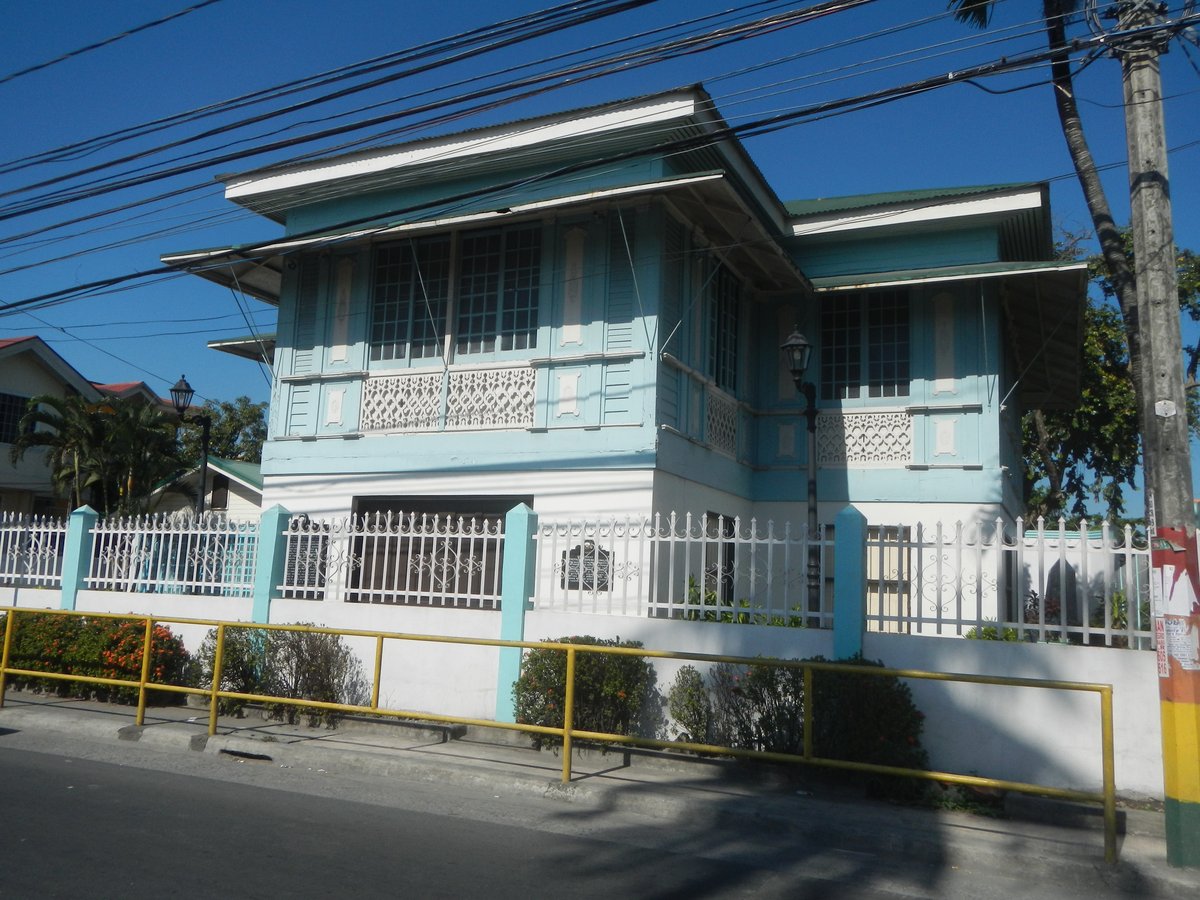
Visiting Hen. Baldomero Aguinaldo y Baloy: Hours, Tickets, and Guide
Publication Date: 01/08/2024
Introduction: Discover the History and Significance
The Baldomero Aguinaldo Shrine, located in Binakayan, Kawit, Cavite, is a must-visit destination for anyone interested in Philippine history and culture. This historic site is not only a memorial to General Baldomero Aguinaldo, a key figure in the Philippine Revolution and cousin to the first President of the Philippines, Emilio Aguinaldo, but it also offers an enriching experience for visitors through its well-preserved architecture and historical exhibits. Built in 1906, the shrine embodies the ‘bahay na bato’ (stone house) architectural style, a classic example of early 20th-century Filipino architecture. Visitors can explore various aspects of Baldomero Aguinaldo’s life, from his early years and significant contributions to the revolutionary movement, to his post-revolution activities and legacy. Managed by the National Historical Commission of the Philippines (NHCP), the shrine also serves as a museum, showcasing important relics and memorabilia that reflect the lifestyle and struggles of the era (Bluedreamer27, Wikipedia).
Table of Contents
- Introduction
- Historical Background
- Visiting the Baldomero Aguinaldo Shrine
- Architectural Features of the Baldomero Aguinaldo Shrine
- Visitor Information
- Frequently Asked Questions (FAQ)
- Conclusion
- References and Further Reading
Historical Background
Early Life and Family
Baldomero Aguinaldo y Baloy was born on February 26, 1869, in Binakayan, Kawit, Cavite. He was the first cousin of Emilio Aguinaldo, the first President of the Philippines. Baldomero’s family was well-off, owning substantial agricultural lands in Cavite. This affluence allowed him to receive a good education, which was uncommon during the Spanish colonial period. He studied at the Colegio de San Juan de Letran and later at the University of Santo Tomas, where he earned a degree in law.
Role in the Philippine Revolution
Baldomero Aguinaldo played a significant role in the Philippine Revolution against Spanish colonial rule. He was a key figure in the Magdalo faction of the Katipunan, a revolutionary society founded by Andres Bonifacio. The Magdalo faction, named after Mary Magdalene, was based in Cavite and was one of the most active revolutionary groups during the uprising. In the early days of the revolution, Baldomero was instrumental in organizing the Magdalo chapter in Kawit. He served as the president of the council, working closely with his cousin Emilio Aguinaldo. Baldomero’s leadership and organizational skills were crucial in the early successes of the Magdalo faction. He was involved in several key battles, including the Battle of Imus and the Battle of Binakayan-Dalahican, where the Filipino forces achieved significant victories against the Spanish.
The Battle of Binakayan-Dalahican
The Battle of Binakayan-Dalahican, fought from November 9 to 11, 1896, was one of the most significant battles in the Philippine Revolution. The battle took place in the towns of Binakayan and Dalahican in Cavite. Baldomero Aguinaldo, along with his cousin Emilio, played a crucial role in this battle. The Filipino forces, although outnumbered, managed to defeat the Spanish troops, marking the first major victory for the revolutionaries. The victory at Binakayan-Dalahican boosted the morale of the Filipino revolutionaries and demonstrated their capability to challenge Spanish colonial rule. This battle also solidified the leadership of the Aguinaldo cousins within the revolutionary movement. The success of the battle was attributed to the excellent trench system designed by General Edilberto Evangelista, which provided a strategic advantage to the Filipino forces (Wikipedia).
The Tejeros Convention
The Tejeros Convention, held on March 22, 1897, was a pivotal event in the Philippine Revolution. The convention aimed to resolve the leadership dispute between the Magdalo and Magdiwang factions of the Katipunan. During the convention, Baldomero Aguinaldo was elected as the Treasurer of the newly formed revolutionary government, known as the Republica Filipina. Emilio Aguinaldo was elected as the President, while Andres Bonifacio, the founder of the Katipunan, was elected as the Director of the Interior. The Tejeros Convention marked a significant shift in the leadership of the revolutionary movement. The election of Emilio Aguinaldo as President and Baldomero Aguinaldo as Treasurer indicated the growing influence of the Magdalo faction. However, the convention also led to internal conflicts, particularly between Emilio Aguinaldo and Andres Bonifacio, which eventually resulted in Bonifacio’s arrest and execution (Wikipedia).
The Pact of Biak-na-Bato
The Pact of Biak-na-Bato, signed on December 15, 1897, was an agreement between the Spanish colonial government and the Filipino revolutionaries. The pact aimed to end the hostilities and grant self-rule to the Philippines within three years. Baldomero Aguinaldo was one of the signatories of the pact, serving as the Treasurer of the revolutionary government. Under the terms of the pact, Emilio Aguinaldo and other revolutionary leaders agreed to go into exile in Hong Kong in exchange for monetary compensation and amnesty. However, the Spanish government failed to fulfill its promises, leading to the resumption of hostilities. The pact ultimately failed to achieve its objectives, but it marked a temporary cessation of the revolution (Philippine History).
Post-Revolution Activities
After the revolution, Baldomero Aguinaldo continued to play an active role in the political and social life of the Philippines. He was elected as the first president of the Association of Veterans of the Revolution (Asociacion de los Veteranos de la Revolucion Filipina) in 1912. The association aimed to support the veterans of the revolution and their families. Baldomero also served as a member of the Philippine Assembly, representing the province of Cavite. He was involved in various initiatives to promote the welfare of his constituents and support the development of his hometown. Despite his political activities, Baldomero remained committed to his agricultural pursuits, managing his family’s lands and engaging in farming.
Legacy and Memorials
Baldomero Aguinaldo passed away on February 4, 1915, in Manila due to heart failure and rheumatism. He was initially interred at the Manila North Cemetery, but his remains were later exhumed and brought back to his home in Kawit. Today, Baldomero Aguinaldo is remembered as one of the key figures in the Philippine Revolution and a dedicated public servant. The Baldomero Aguinaldo Shrine, located in Binakayan, Kawit, Cavite, serves as a memorial to his contributions to the country’s history. The shrine, managed by the National Historical Commission of the Philippines (NHCP), is a two-story building that once served as Baldomero’s official residence. The museum showcases important relics and memorabilia of the late revolutionary hero, providing visitors with a glimpse into his life and legacy (Bluedreamer27).
Visiting the Baldomero Aguinaldo Shrine
Ticket Information and Visiting Hours
The Baldomero Aguinaldo Shrine is open to the public from Tuesday to Sunday, 8:00 AM to 4:00 PM. Admission is free, but donations are welcome to support the maintenance of the shrine. Guided tours are available upon request, providing visitors with a more in-depth understanding of Baldomero Aguinaldo’s life and the historical significance of the site.
Travel Tips and Accessibility
The shrine is located in Binakayan, Kawit, Cavite, which is easily accessible by car or public transportation from Manila. Visitors are encouraged to wear comfortable clothing and shoes, as the tour involves walking through the historical house and its surrounding areas. The shrine is wheelchair accessible, ensuring that everyone can enjoy the visit.
Nearby Attractions
While in Cavite, visitors can also explore other historical sites such as the Emilio Aguinaldo Shrine, the site of the Declaration of Philippine Independence, and the Imus Cathedral. These locations offer a broader perspective on the rich history of the region and its role in the Philippine Revolution.
Special Events and Photographic Spots
The Baldomero Aguinaldo Shrine hosts special events throughout the year, including commemorations of significant dates in Philippine history and educational programs for students. The well-preserved ancestral house and its picturesque surroundings provide excellent photographic opportunities for visitors looking to capture their experience.
Architectural Features of the Baldomero Aguinaldo Shrine
Overview of the Structure
The house embodies the ‘bahay na bato’ style, which was popular during the Spanish colonial period and continued into the American era. The structure is primarily made of stone and Philippine hardwoods such as molave and narra.
Exterior Design
The exterior, with its blue-green and white paint finish, features simple yet elegant decorative details typical of early 20th-century architecture. The house is constructed using durable materials that help it withstand the tropical climate of the Philippines.
Ground Floor
The ground floor, known as the ‘bodega,’ serves as a working area used for storage and various household activities. The practical design focuses on functionality, utilizing stone to offer a sturdy foundation and cooler interior temperatures.
Upper Floor
The upper floor houses the main living areas, including the living room (‘sala’), which faces the street and is accessible via a staircase. The well-ventilated space features three windows on each side of the room, made up of large glass panes and fixed wooden blinds crafted from Philippine hardwoods.
Ventanillas
One unique feature of the windows is the presence of ‘ventanillas,’ small openings between the floor and the window sill that provide additional ventilation, crucial for maintaining a cooler indoor environment in the hot and humid climate of the Philippines.
Interior Furnishings
The interior is furnished with late 19th-century and early 20th-century items, including art, ceramics, and personal memorabilia, offering a glimpse into the lifestyle of a prominent Filipino family during the revolutionary period.
Decorative Elements
The house features intricate wall carvings and other decorative elements that highlight the artistic skills of Filipino artisans, adding to the aesthetic appeal and historical value of the shrine.
Restoration and Preservation
In 1982, the grandchildren of General Baldomero Aguinaldo donated the house to the Philippine government. The Intramuros Administration restored the house, transforming it into a museum to preserve its historical integrity.
Visitor Information
Visiting Hours and Tickets
The Baldomero Aguinaldo Shrine is open to visitors from Tuesday to Sunday, 8 AM to 4 PM. The entrance is free of charge, although donations are welcome to support the maintenance and preservation of the site (Bluedreamer27).
Accessibility
The shrine is easily accessible from various parts of Cavite and Metro Manila. Visitors can take the CAVITEx and follow the directions toward Binakayan, Kawit. The house is located on Bisita Street, close to other historical landmarks in the area.
Travel Tips
- Best Time to Visit: The shrine is less crowded during weekdays, making it an ideal time for a more relaxed visit.
- What to Bring: Comfortable clothing and shoes are recommended due to the tropical climate.
- Nearby Attractions: Other historical sites in Kawit, such as the Emilio Aguinaldo Shrine, are worth visiting.
Frequently Asked Questions (FAQ)
Q: What are the visiting hours for the Baldomero Aguinaldo Shrine? A: The shrine is open from Tuesday to Sunday, 8:00 AM to 4:00 PM.
Q: Is there an admission fee to visit the shrine? A: Admission is free, but donations are welcome.
Q: Are guided tours available? A: Yes, guided tours are available upon request.
Q: Is the shrine wheelchair accessible? A: Yes, the shrine is wheelchair accessible.
Q: What other attractions are nearby? A: Nearby attractions include the Emilio Aguinaldo Shrine and the Imus Cathedral.
Conclusion
The Baldomero Aguinaldo Shrine is a vital part of Philippine history, offering an insightful look into the life of a key revolutionary figure and the broader context of the struggle for independence. With its rich historical significance, visitor-friendly amenities, and proximity to other historical sites, the shrine is a must-visit destination for history enthusiasts and tourists alike. Plan your visit today and immerse yourself in the legacy of Baldomero Aguinaldo and the Philippine Revolution (Bluedreamer27, Philippine History).
References and Further Reading
- Bluedreamer27, Revisiting Baldomero Aguinaldo Museum, Museo Ni Baldomero Aguinaldo https://bluedreamer27.com/revisiting-baldomero-aguinaldo-museum-museo-ni-baldomero-aguinaldo/
- Wikipedia, Baldomero Aguinaldo Shrine https://en.wikipedia.org/wiki/Baldomero_Aguinaldo_Shrine
- Philippine History, Biak-na-Bato http://www.philippine-history.org/biak-na-bato.htm



